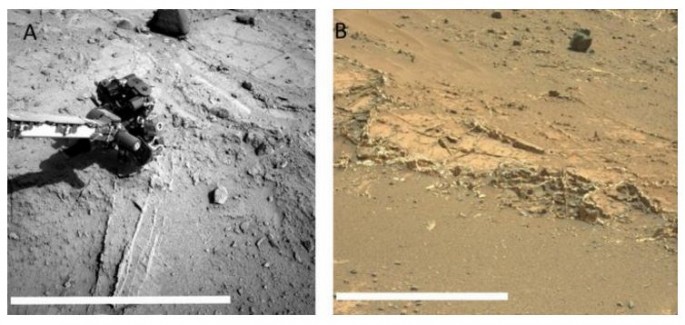Ancient lakes on Mars that have long since evaporated are the cause of the intriguing mineral veins found in the Gale Crater the Mars Curiosity Rover is currently exploring.
Research by Mars Science Laboratory Participating Scientists at The Open University and the University of Leicester used Curiosity rover to explore Yellowknife Bay in Gale Crater, examining the mineralogy of veins that were paths for groundwater in mudstones.
It suggests the sulphur and iron rich groundwater in Gale Crater was habitable by Earth standards. The results also provide evidence for long and varied history of water in the Gale Crater.
The study suggests the veins formed as the sediments from the ancient lake were buried, heated to about 50 degrees Celsius and corroded.
"The taste of this Martian groundwater would be rather unpleasant, with about 20 times the content of sulphate and sodium than bottled mineral water for instance," said Professor John Bridges from the University of Leicester Department of Physics and Astronomy.
"However as Dr. Schwenzer from The Open University concludes, some microbes on Earth do like sulphur and iron rich fluids, because they can use those two elements to gain energy. Therefore, for the question of habitability at Gale Crater the taste of the water is very exciting news."
The research suggests the evaporation of ancient lakes in Yellowknife Bay would have led to the formation of silica and sulphate-rich deposits.
Subsequent dissolution by groundwater of these deposits, which the team predict are present in the Gale Crater sedimentary succession, led to the formation of pure sulphate veins within the Yellowknife Bay mudstone.
The study predicts the original precipitate was likely gypsum, which dehydrated during the lake's burial.
"These result provide further evidence for the long and varied history of water in Gale Crater. Multiple generations of fluids, each with a unique chemistry, must have been present to account for what we find in the rock record today," said Ashwin Vasavada, Curiosity Project Scientist from the NASA Jet Propulsion Laboratory.



























